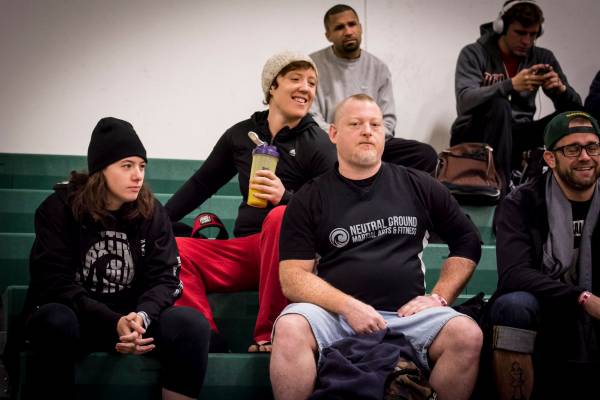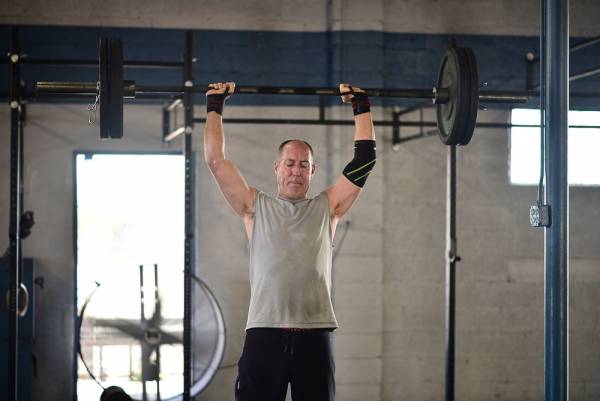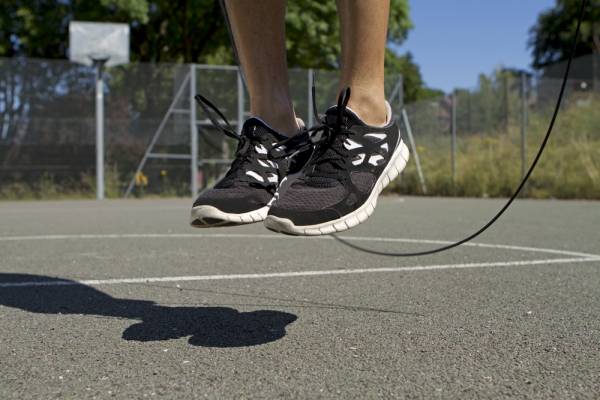“I’m not as good as I once was,
but I’m as good once as I ever was.”
If you’re like many over the last month or so, you’ve been taking some time to reflect on what you’d like to change for 2015. Many of you younger guys may have leapt into action and started making big changes even before the new year.
But if you’re in my age group, you’re probably more prone to have sat on things for a while and made sure what you were thinking about was a worthy and accomplishable goal for 2015. Because there’s no point setting goals that aren’t achievable.
The Value of Experience
There’s a tale about two old bulls standing on top of a hill looking down at a herd of cows. The younger bull turns to the older bull and says, “We should run down there and screw one of those cows.” The older bull turns to the young bull and says, “We should walk down there and screw them all.” And that’s the difference experience makes.
The problem with getting older is that we feel the same inside despite some more shallow changes to our bodies. In my head, I’m the same guy I’ve always been. But on my driver’s license it says I’m 43.
RELATED: The Training Solution for the 40+ Athlete
My body has changed as I’ve gotten older, and some things are much harder than they used to be. Being an older athlete is tougher and if you plan to make 2015 a year worth remembering physically, then you may need to finally admit some truths.
You Can’t Miss Details Anymore
The little things I used to be able to slip on have slowly been given up. I haven’t drunk alcohol for nearly three years. That wasn’t actually hard to let go of, as I was never much of a drinker. But the foggy heads I see from many of my clients in the morning remind me why I stopped.
RELATED: How to Grow Older Disgracefully
If you have a busy schedule and need to train early in the day, the single biggest reason I can give you for reducing or stopping drinking is that you’ll be much better off in the mornings. This benefits more than just training, too, as you’ll be far more productive at your job, where you’ve likely got more responsibility than you did as a young bull and need to think more clearly.
“Being able to get into a good squat position and a good overhead position are two of the first things that disappear in people who have spent a lifetime sitting hunched at a desk.”
My cheat meals have all but disappeared completely, too. While I had a bit of a blowout over Christmas and let my body and mind rest, I know if I want to perform at my best, then I need to fuel my body well. When it comes to any aesthetic goals you may have, they’re even harder to achieve as you age. Fat is harder to shift and building muscle is more difficult, too. Achieving your body composition goals are all underpinned by eating the right food.

Sleep is perhaps the biggest hurdle for many. Work-related pressures, kids, and household chores all add to our stress level and make it difficult to get to bed. As with other choices that involve removing things from your life, sleep is improved through elimination as well – remove television from your life and watch how much more time you have. I’m always amazed when people tell me they don’t have time and then I see their Facebook pages saying they watched three whole seasons of Breaking Bad back to back. You’ll be amazed at what can be accomplished when you get rid of the idiot box.
There Are No Minor Details
When you’re younger, you can skip parts of training with seemingly no ill effects. Rushed for time? No problem, we’ll just skip the warm up and cool down. Try that beyond a certain age and you’re asking for anything from being too stiff the next day to train again to injury.
“The problem with getting older is that we feel the same inside despite some more shallow changes to our bodies.”
The warm up is the time when we can objectively assess how our body is doing that. Like it or not, you won’t always be able to stick to your training plan as you get older. There will be days when your body decides it needs a rest. The warm up is the time you find that out. If you skip it, you may not train again for weeks as you nurse an injury from pushing too hard when you should have heeded the precautionary signs elicited during the warm up.

Likewise, the cool down also needs to be done. Once the nervous system has been excited during training and muscles have been asked to stiffen and tense, you need to spend time calming things down and getting everything back to rest. If all you do is the work to excite the nervous system and nothing to settle it down again, sooner or later your body will be one big tense mess.
RELATED: The 5 Training Mistakes You Need to Avoid After 35
I see it all the time – older lifters who can still lift heavy, but can’t touch their toes or struggle to put their shoes on. Hopefully, as you get a bit older and wiser, you’ll realize that maybe being able to put your shoes on without assistance is more important than adding 5kg to your deadlift.
Plug the Natural Gaps
As we get older, the body tends to lose some bounce. Muscle elasticity changes, and with that both power and range of motion change, as well. If you want to stay as good as you can be as you get older, then you need to incorporate as much work for both of these aspects as you can.
RELATED: Fitness at 40 – How to Train Hard and Play Smart
But you need to be smart about it. Suddenly adding in some plyometric drills is a quick way to hurt a body that is lacking bounce. Smart alternatives for power training involve medicine ball throws and kettlebell ballistics. These work important aspects without placing unnecessary risks on the body. Skipping rope is a massively undervalued tool for keeping that bounce in your step, too.

While I think range-of-motion work – both mobilizing the joints and flexibility work – are essential to everyone and wish the entire fitness community would spend more time on them, nowhere is the importance of it more evident than in older lifters. Being able to get into a good squat position and a good overhead position are two of the first things that disappear in people who have spent a lifetime sitting hunched at a desk.
“I’m always amazed when people tell me they don’t have time and then I see their Facebook pages saying they watched three whole seasons of ‘Breaking Bad’ back to back.”
Charles Poliquin estimates it requires six hours a week for six weeks to make a noticeable improvement to range of motion. Ido Portal says it takes a daily practice, six days per week, for one to three years to get the levels he expects of his students. Either way the message is clear – we should be stretching and working on range of motion daily, rather than mindlessly foam rolling looking for a short-term gain that allows us to train right now. This is for life, remember? The best way I’ve found to do this is to take ten- to fifteen-minute breaks during the day to get in some extra mobility work.
Achieving Fitness for Life
But the biggest change you need to make to stay at the top of your game as you get older isn’t physical – it’s mindset. If fitness becomes something you naturally do daily, then you will stay in good shape. But if it’s something you do out of shame for six to twelve weeks at the start of each year, then you’re unlikely to ever get in great shape.
IT’S NEVER TOO LATE TO START: Free Workouts for Mature Athletes
Pay attention to the small details like sleep and food quality, and spend time on warming up and cooling down, and you’ll quickly notice how much difference these lifestyle and mindset changes make.
Photo 1 courtesy of Dan of Earth.
Photo 3 courtesy of CrossFit Empirical.
Photos 2 and 4 courtesy of Shutterstock.






